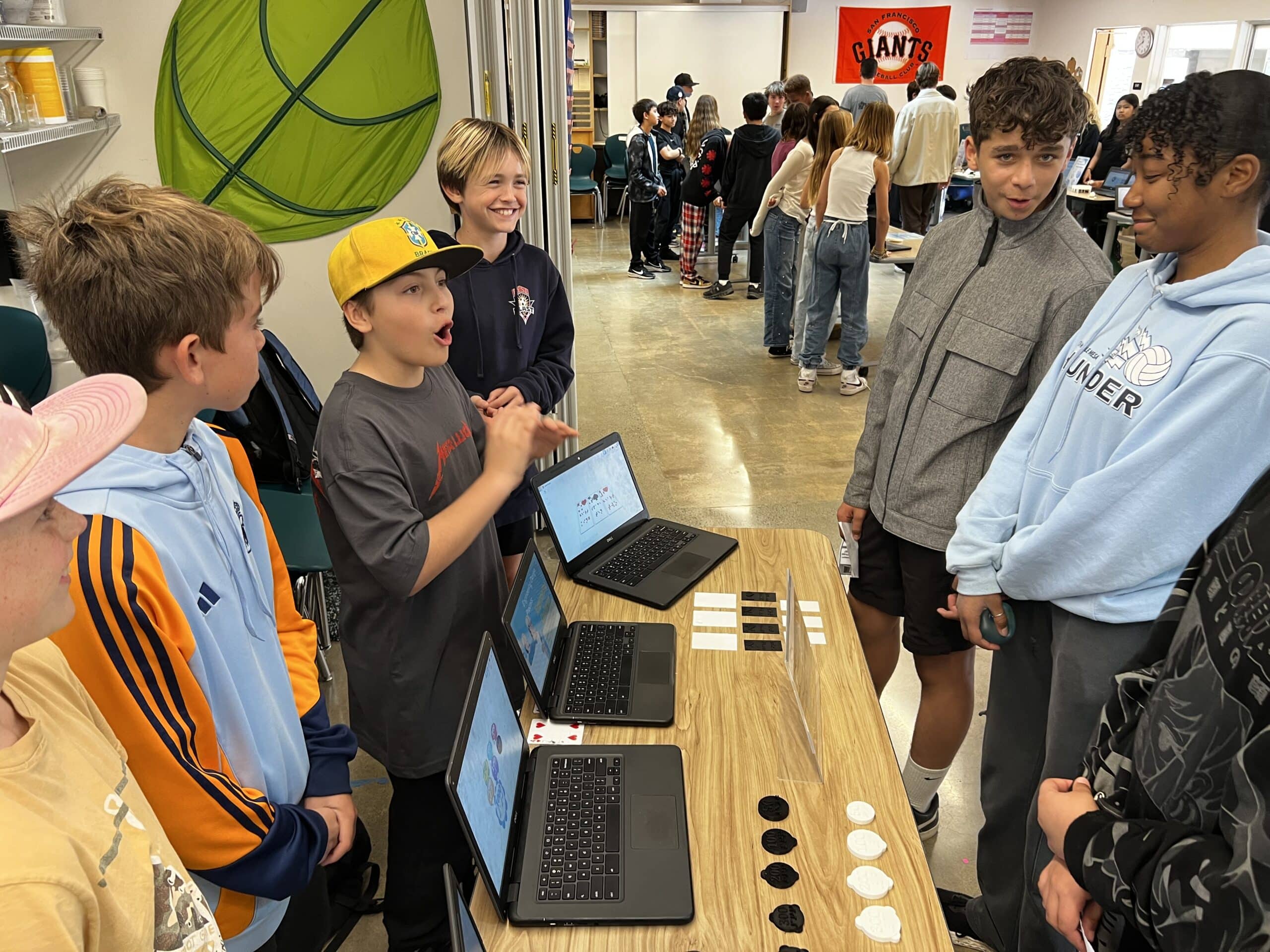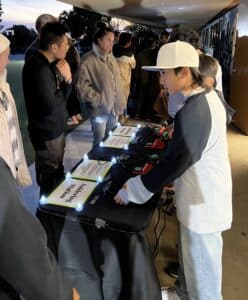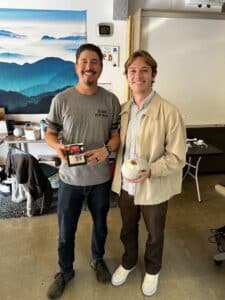
A softball that emitted a continuous beeping sound was tossed to a blindfolded student. The student took a swing and then ran toward a ‘base’ that also emitted sounds to attract the baserunner. The “Beep Baseball” game at High Tech Middle Mesa was part of a recent Exhibition, where students showcased and field-tested re-engineered beep baseball equipment for the visually impaired.
The “Play It By Ear” project, powered by the passion of sixth-grade students and the expert guidance of teachers Dave Garcia and Nate Ewart, left an indelible mark on beep baseball organizers, who had been beset by basic challenges. The equipment beep baseball leagues use frequently breaks down, and it is not like you can simply order new equipment online. The beep baseballs are not mass-produced; rather, much of the equipment is created by volunteers.
So on a chilly January night, the HTMM students demonstrated how reimagining everyday sports like Beep Baseball and board games could break down barriers, ensuring that everyone, no matter their visual ability, could join in the fun.
A Spark That Lit the Flame

The journey began with a simple yet powerful question:
“How can activities be designed so that everyone can participate, irrespective of visual ability?”
An introduction to Beep Baseball, a sport adapted specifically for visually impaired players, provided the spark of inspiration. Insights from the SoCal Beep Baseball Association highlighted the challenges faced by those who rely on senses beyond sight to enjoy the thrill of the game.
During the early weeks, the classroom buzzed with energy. Students gathered with genuine curiosity, eager to uncover not only the mechanics of the game but also the spirit of inclusion behind it. Lessons in the science of sound and light revealed how these elements might be harnessed to create accessible playing experiences. More than a lesson in physics or engineering, those early days became a lesson in empathy, proving that even small design tweaks can significantly improve someone’s quality of life.
Rolling Up Sleeves and Embracing Challenges
Inspired by that initial spark, the students embarked on a two-phase project designed to promote creativity and technical skill. In the first phase, the focus was on learning and observation. Immersed in the world of Beep Baseball, the young innovators pinpointed key challenges, such as the unreliable beeping mechanism in the baseballs, that prevented visually impaired players from fully enjoying the sport. This phase was more than an academic exercise; it was a chance to confront real-world problems head-on.
The second phase brought ideas to life. The students dove into the engineering design process with enthusiasm, re-engineering existing games and inventing new ones that championed inclusion. With the help of CAD programs and 3-D printing, imaginative ideas transformed into tangible prototypes. The classroom morphed into a dynamic workshop where scientific principles met creative design.
One standout creation was a re-engineered Beep Baseball prototype. Thanks to invaluable support from community partners such as the UCSD Engineering Department, functioning circuits were built, custom PCB boards were designed, and a reliable beeping mechanism was developed. The inventive spirit extended further, a team reimagined a traditional card game by adding braille to the playing cards and chips, ensuring visually impaired players could take part. In another creative leap, a team introduced “Kick Golf,” featuring a specially designed beeping ball that helped players navigate a custom course. Yet another group developed a braille version of the popular “Candyland” children’s board game.
On Wednesday, January 22, 2025, the Exhibition drew an enthusiastic crowd to High Tech Middle Mesa. Parents, teachers, community members, and beep baseball representatives filled the auditorium, all eager to witness the culmination of months of hard work.

Each display told its own story of perseverance and ingenuity. Booths showcased innovative prototypes, and students took pride in explaining the details behind each creation. Laughter, applause, and even a few heartfelt tears filled the room, underscoring the event’s deep significance. It was more than a showcase of technical skills; it was a celebration of the human spirit and the belief that every individual deserves a chance to play.
Nate Ewart, one of the guiding teachers, captured the essence of the project during the event.
“Inspiration was drawn from Beep Baseball because it embodies the idea of inclusion,” he explained. “The challenge was to transform an existing game so that it could be enjoyed by everyone, whether sighted or visually impaired. The commitment shown by these students, from initial sketches to the final 3-D printed prototypes, was nothing short of extraordinary.”
His words resonated with everyone, emphasizing that true innovation stems from understanding and compassion.
The Ripple Effect Beyond the Classroom
The influence of “Play It By Ear” reached far beyond the walls of High Tech Middle Mesa. Parents marveled at how the project enriched educational experiences, fostering essential skills like critical thinking and creative collaboration, while instilling a sense of responsibility and compassion. Community partners, whose expertise played a crucial role in the project’s success, observed that these skills were exactly what the future demands.
The project sparked important conversations about accessibility and inclusion throughout the broader community. It served as a vivid reminder that thoughtful, innovative solutions can tackle real-world challenges and improve lives. Every obstacle encountered became an opportunity for growth, proving that even the most ambitious ideas can transform into reality with enough determination.
Learn more about Play It By Ear in this video, courtesy of Brent Spirnak of the HTH Graduate School of Education.
Tags: